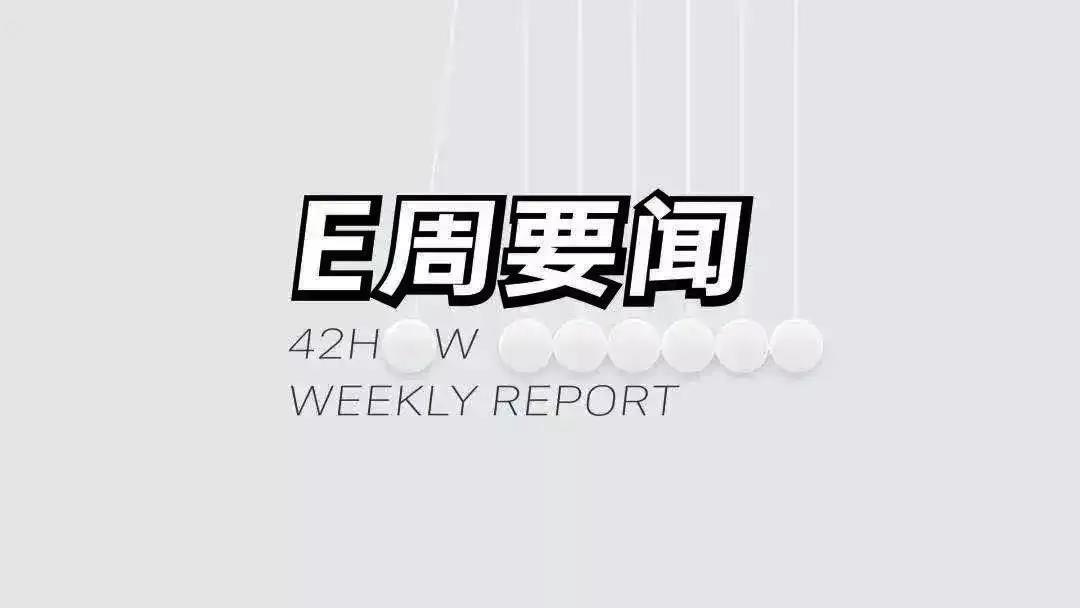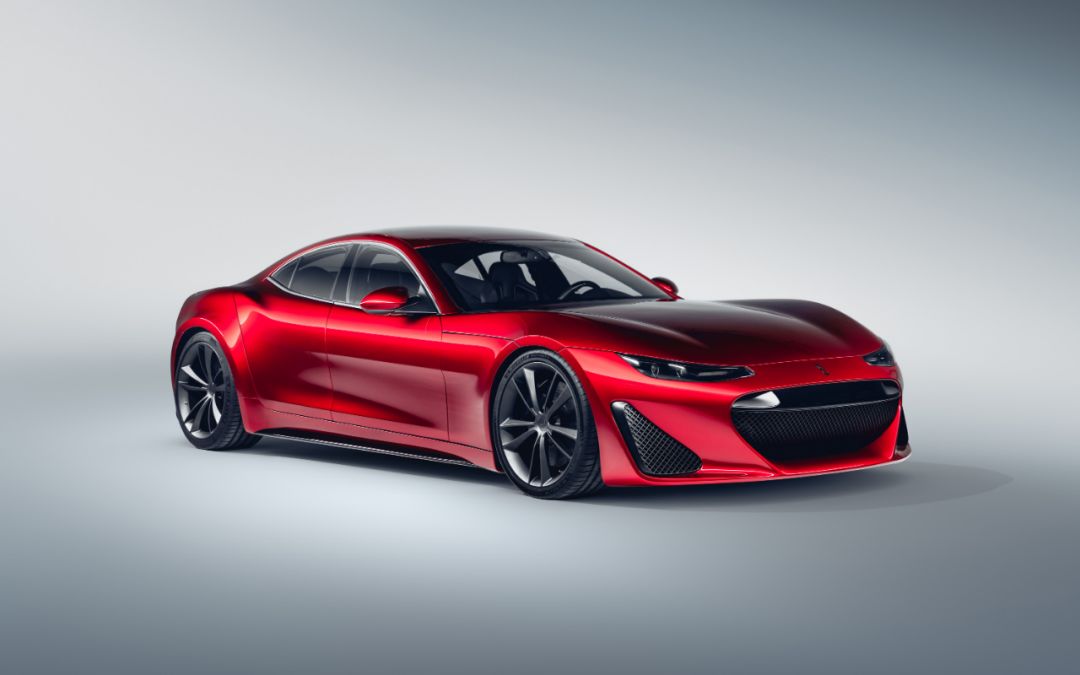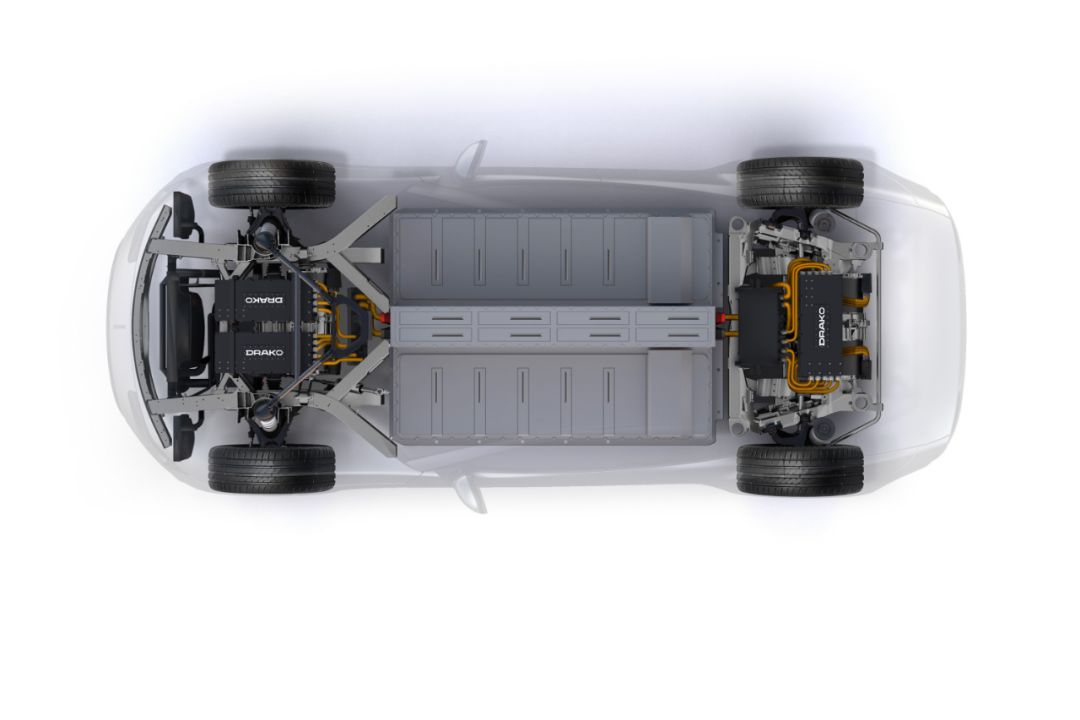Weekly Index

Weekly News
Tesla Model 3 Lands in South Korea
On August 13th, Tesla officially launched the Model 3 in South Korea, with the standard upgrade version priced at KRW 52.39 million (approximately RMB 302,600), the long-range all-wheel drive version at KRW 62.39 million (approximately RMB 360,400), and the performance version priced at KRW 72.39 million (approximately RMB 418,200).

Currently, South Korea has a large subsidy for electric vehicles, and the Model 3 can get a subsidy of over KRW 20 million, which means that the price of the Model 3 in South Korea after the subsidy will be less than KRW 32 million (approximately RMB 187,000).
Quick Review: This price is so inhumane! Let’s wait and see the sales in the South Korean market. However, South Korean government, why don’t you protect your own national enterprises? If it could be sold at this price in China, I wonder if the current orders would have been queued up until 2022.
Production Version of DENZA X Exposed
DENZA X has a pure electric version and a plug-in hybrid version, with little difference in appearance between the two models.

Both cars have a size of 489019501725mm, and a wheelbase of 2820mm, almost identical to the BYD Tang (Tang: 487019401720mm, wheelbase 2820mm). In terms of curb weight, the pure electric model is lighter at 2175kg, while the plug-in hybrid model is heavier at 2390kg.
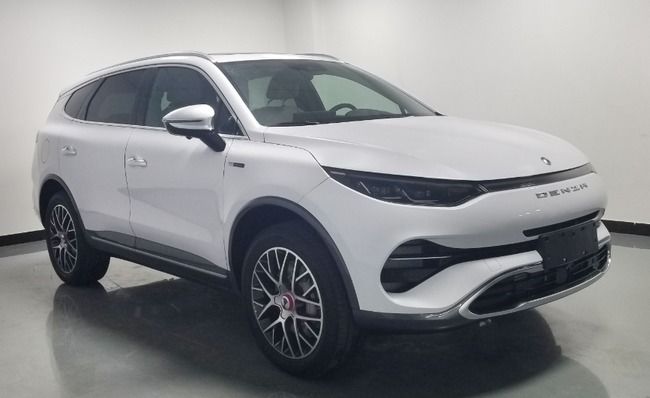

The performance parameters of the new DENZA X are expected to be similar to that of the pure electric and plug-in hybrid versions of BYD Tang. Two interesting points deserve our attention: the new DENZA X has a brand new logo and the logo of the plug-in hybrid model also features the word “PERFORMANCE” underneath. In addition, the DENZA X also has the word “BYD” printed on the tail, which is quite intriguing.
Quick comment: When DENZA unveiled the Concept X concept car in June, although the overall body shape was similar to BYD’s, the styling was still noticeably different. With the launch of the production version of DENZA X now, it looks rather plain.
Additionally, it was revealed during the June launch event that Beijing Mercedes-Benz Sales Service Co., Ltd. will be responsible for part of DENZA’s business operations, including sales, marketing and brand communication, customer service, and network development.
Tang Shi-kai, member of the Daimler AG Board of Management and Head of Daimler Greater China, also stated that the Mercedes-Benz dealer network is the most suitable choice to sell new DENZA electric vehicles.
Imagine a few DENZA cars with BYD logos on their backs being displayed in a Mercedes-Benz dealership…
Chevrolet Menlo EV Revealed in MIIT Catalog Images
Chevrolet Menlo EV has been listed in the catalog of the Ministry of Industry and Information Technology. This is Chevrolet’s first pure electric vehicle in China, with dimensions of 466518131513 mm, a wheelbase of 2660 mm, a curb weight of 1660 kg, and a maximum motor power of 110 kW, which is the Chevrolet version of Buick VELITE 6.

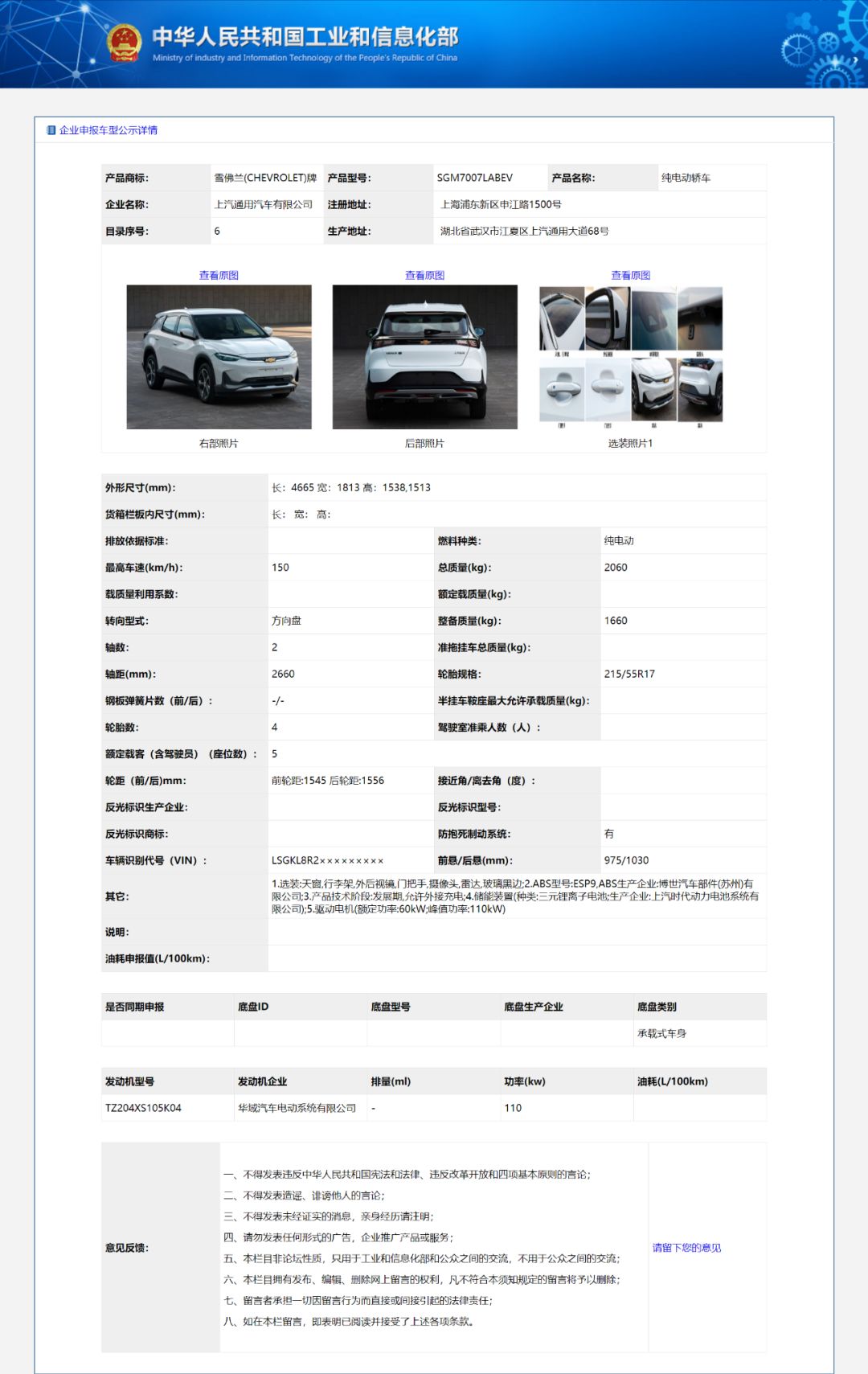
At present, the NEDC range of VELITE 6 is 301 km and the maximum output power is 85 kW, which is quite ordinary. However, in the second half of this year, VELITE 6 will launch a version with an NEDC range of 410 km, and the power will also be increased to 110 kW. The parameters of Chevrolet’s Menlo EV should be similar to those of VELITE 6.> Quick review: Chevrolet Menlo EV has a NEDC range of 410 kilometers, which may not be impressive in 2019 but is at least passable. Compared with other domestic electric vehicles at a similar level whose range is generally around 300 kilometers, the Chevrolet Menlo EV is still very competitive. If priced reasonably, it could attract many potential customers who intend to buy a domestically manufactured electric vehicle.
>
BAIC New Energy will deliver 2,000 battery-swapping taxis to Beijing
On August 16, BAIC New Energy handed over 800 battery-swapping taxis (EU300) to the Beijing taxi company, and it is expected that more than 2,000 will be delivered by the end of August. In addition, BAIC New Energy plans to build and operate 88 battery-swapping stations in various areas of Beijing, including within the fifth ring road, large residential areas, the vicinity of the Tongzhou sub-center, and the vicinity of the airport, to further improve the convenience of using such vehicles.
Comment: When speaking of battery-swapping stations, most would instantly think of NIO. However, in fact, BAIC New Energy had already started building a battery-swapping system in 2016; it had mainly targeted the taxi market and as such few consumers knew about it.
However, for taxi operators, battery-swapping is indeed a very good choice. Firstly, it eliminates the problem of battery ownership and management; taxi vehicles, in general, are not under individual ownership. Secondly, it solves the problem of slow recharging of electric vehicles and greatly improves the operational efficiency of electric taxis.
Drako GTE makes its debut at the Pebble Beach Concours d’Elegance
DrakoMotors, a new car company from California, has launched the Drako GTE, a limited edition four-door electric supercar with only 25 vehicles to be produced. It is priced as high as USD 1.25 million, and the first batch of customers is expected to be delivered in 2020. Let’s take a look at its specs:
- Four permanent magnet synchronous motors with a maximum output power of 225 kW each (total power 900 kW), capable of achieving torque vector control
- Battery capacity of 90 kWh
- Maximum charging power of 150 kW
- Chassis from Fisker- Suspension: Öhlins TTX36
– Carbon ceramic brake discs, front with 6 pistons, rear with 4 pistonsQuick Comment: Compared with the domestic new-fuel cars, the foreign new-fuel cars have a different approach, all of them are super cars. Let’s take a look at the Drako GTE, with a maximum output power of 900 kW, compared to the Model S P100D with a maximum output power of 577 kW and a 0-100 km/h acceleration time of less than 3 seconds, the Drako GTE’s acceleration is unimaginable.
However, there is a question: how can a car as fast as this still have back seats? I personally wouldn’t dare to sit in the back… it’s too thrilling!
Weekly Data

It is well known that long-distance driving usually takes a long time and is boring, so it is easy to get tired. We also want to know how long most people usually take a break during long-distance driving. Most people (67%) need to take a break after driving for 2-3 hours continuously, which is approximately 200-300 km.
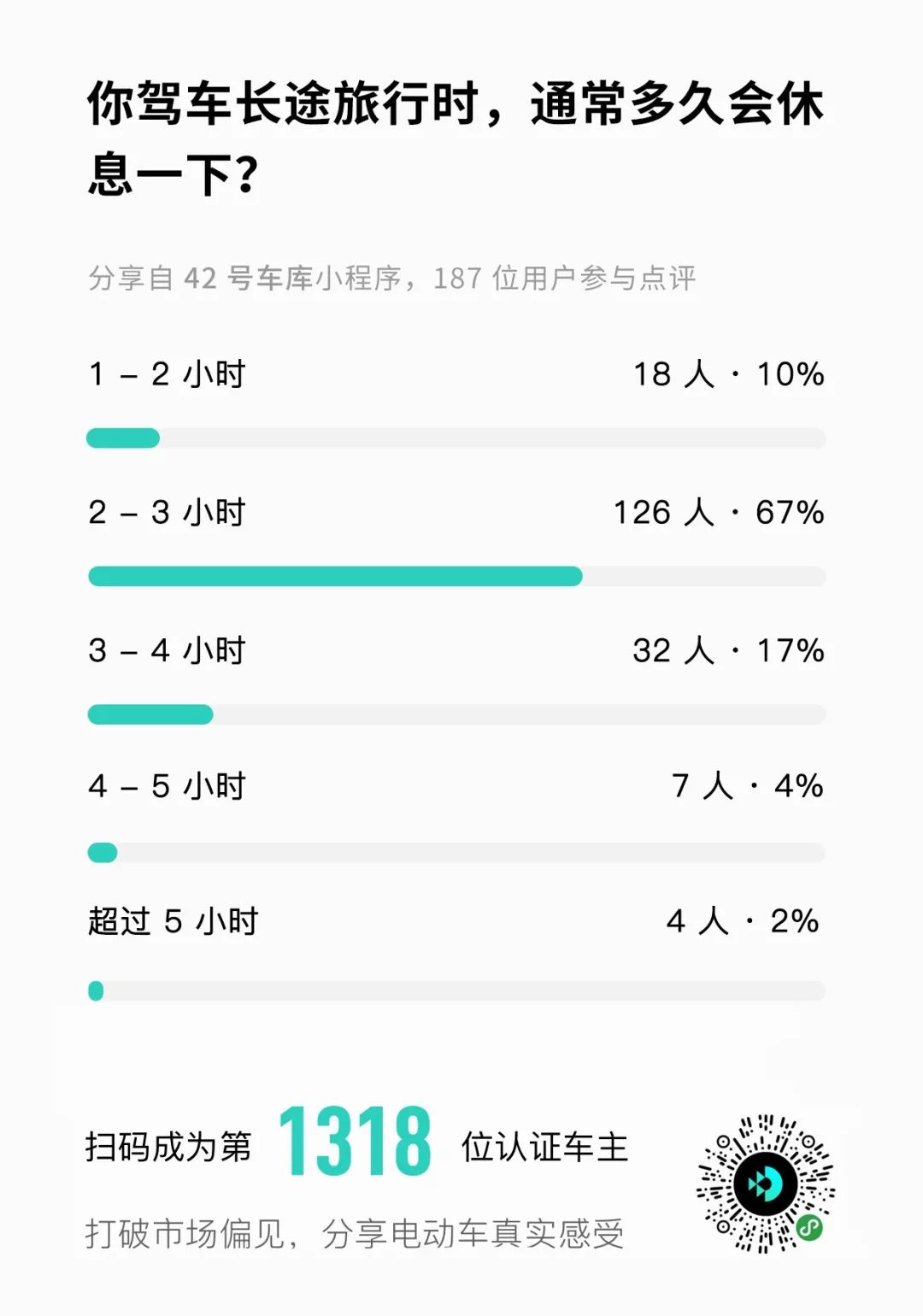
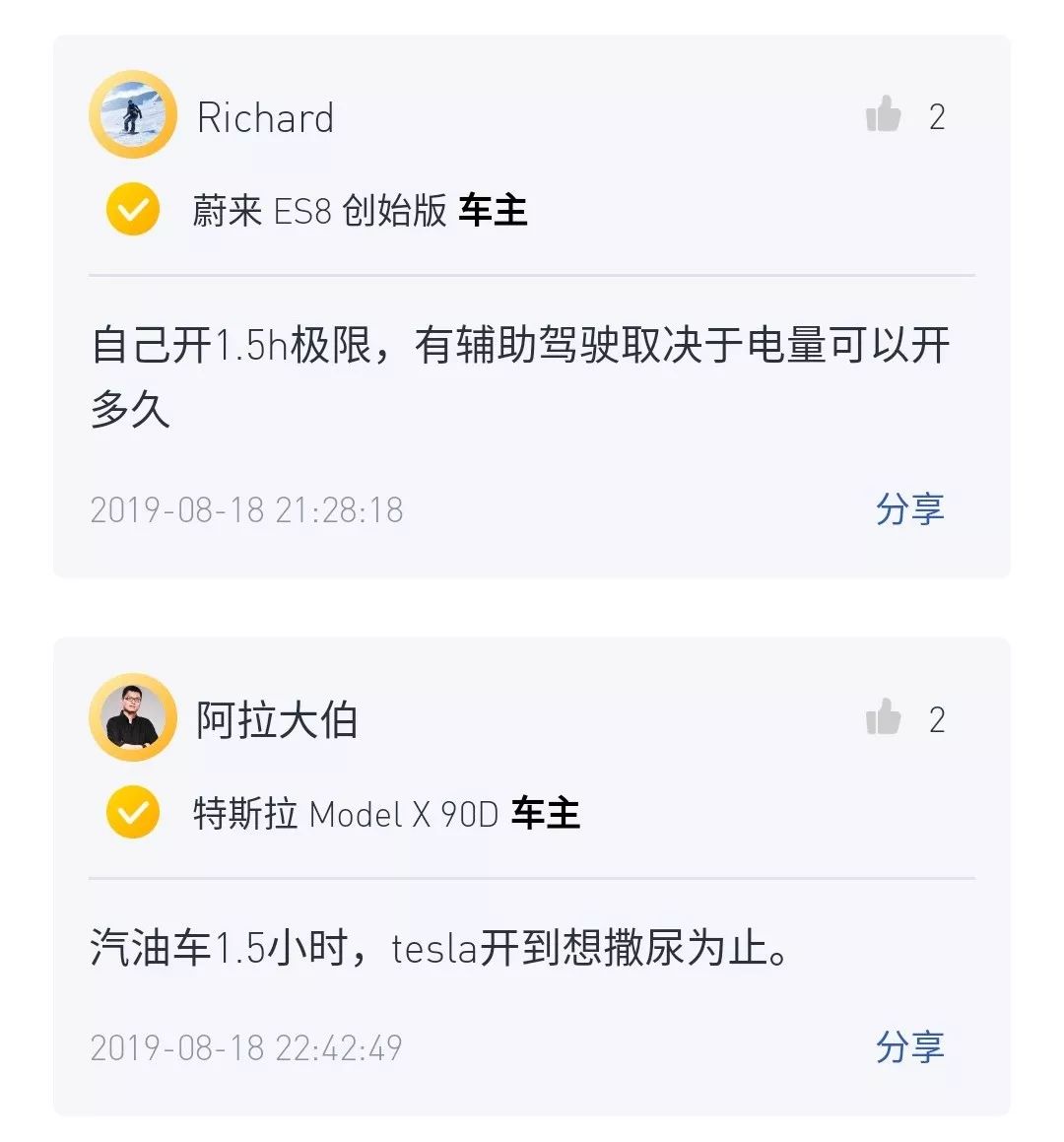
However, the opinions of two car owners are particularly interesting. With the assistance of driving aids, people themselves will not need to take breaks due to fatigue. Whether a break is needed when driving at high speeds depends on how long you can hold your pee/how long the car battery can last. It can be seen that L2-level driving assistance is already very useful for high-speed driving.

Part-Time Editor Recruitment
Job Description: Responsible for producing the weekly E-news every Monday.
Requirements: Familiarity with the electric vehicle industry and future trends, fluent expression skills, priority for candidates in Shanghai.
Contact Email: d@42how.com, with a news and a short comment attached.


This article is a translation by ChatGPT of a Chinese report from 42HOW. If you have any questions about it, please email bd@42how.com.
